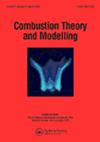工业蒸汽甲烷重整器的模拟和性能改进:折旧和陶瓷涂层效应
IF 1.9
4区 工程技术
Q4 ENERGY & FUELS
引用次数: 1
摘要
本文采用计算流体力学(CFD)方法对某工业转化炉在四种工况下的性能进行了比较。运行的第1年和第10年是两种不同的发射率系数和燃料成分的情况。结果与工业数据和SMR文献中报道的其他典型工厂的CFD模拟进行了验证。结果表明,第10年燃料消耗增加10%并不能弥补皮管中的所有温度下降,并且仍然有14 K的温度下降,导致管中的氢气产量下降5%。这是由于与第一年相比,第十年的燃料成分不同。为了更密切地考察燃料变化的影响,用第10年的燃料成分和第1年的发射系数来定义第三种情况。与其他实例的比较表明,燃料成分对系统性能有很大的影响。第1年到第10年期间效率下降的主要原因与壁面发射系数下降50%有关。最后,在第四种情况下,通过计算流体力学模型,考虑了采用高发射系数的陶瓷涂层对重整器进行第10年的改造。这一变化导致第10年管温升高了约19 K,比第1年增加了3 K。结果表明,陶瓷涂层应用于重整炉耐火材料内壁,可降低14%的燃料消耗,提高产氢率。本文章由计算机程序翻译,如有差异,请以英文原文为准。
Simulation and performance improvement of an industrial steam methane reformer: depreciation and ceramic coating effects
In this work, Computational Fluid Dynamic (CFD) is applied to compare the performance of an industrial reformer furnace in four cases. The first and tenth years of operation are two cases with different emissivity factors and fuel components. The results are validated with industrial data and with other CFD simulation typical plants reported in the SMR literature. The results show that a 10% increase in fuel consumption in the tenth year cannot compensate for all temperature drop in skin tubes, and there is still a 14 K temperature drop, leading to a 5% decrease in hydrogen production in tubes. This is due to the different fuel components of the tenth year compared to the first year. To examine the effect of fuel change more closely, the third case is defined with the fuel components of the tenth year and the emissivity factor of the first year. The comparison of this case with others shows that fuel components have a high effect on system performance. The major reason for efficiency reduction between the first and tenth years correlates to a 50% decline in the wall surface emissivity factor. Finally, in the fourth case, applying a ceramic coating with a high emissivity factor is considered via the CFD model for the reformer in the tenth year. This change leads to an increase of about 19 K in tube temperature in the tenth year, which is 3 K more than that in the first year. It can be concluded that the ceramic coating application in the wall of the refractory of the reformer can reduce 14% fuel consumption and enhance hydrogen production.
求助全文
通过发布文献求助,成功后即可免费获取论文全文。
去求助
来源期刊

Combustion Theory and Modelling
工程技术-工程:化工
CiteScore
3.00
自引率
7.70%
发文量
38
审稿时长
6 months
期刊介绍:
Combustion Theory and Modelling is a leading international journal devoted to the application of mathematical modelling, numerical simulation and experimental techniques to the study of combustion. Articles can cover a wide range of topics, such as: premixed laminar flames, laminar diffusion flames, turbulent combustion, fires, chemical kinetics, pollutant formation, microgravity, materials synthesis, chemical vapour deposition, catalysis, droplet and spray combustion, detonation dynamics, thermal explosions, ignition, energetic materials and propellants, burners and engine combustion. A diverse spectrum of mathematical methods may also be used, including large scale numerical simulation, hybrid computational schemes, front tracking, adaptive mesh refinement, optimized parallel computation, asymptotic methods and singular perturbation techniques, bifurcation theory, optimization methods, dynamical systems theory, cellular automata and discrete methods and probabilistic and statistical methods. Experimental studies that employ intrusive or nonintrusive diagnostics and are published in the Journal should be closely related to theoretical issues, by highlighting fundamental theoretical questions or by providing a sound basis for comparison with theory.
 求助内容:
求助内容: 应助结果提醒方式:
应助结果提醒方式:


